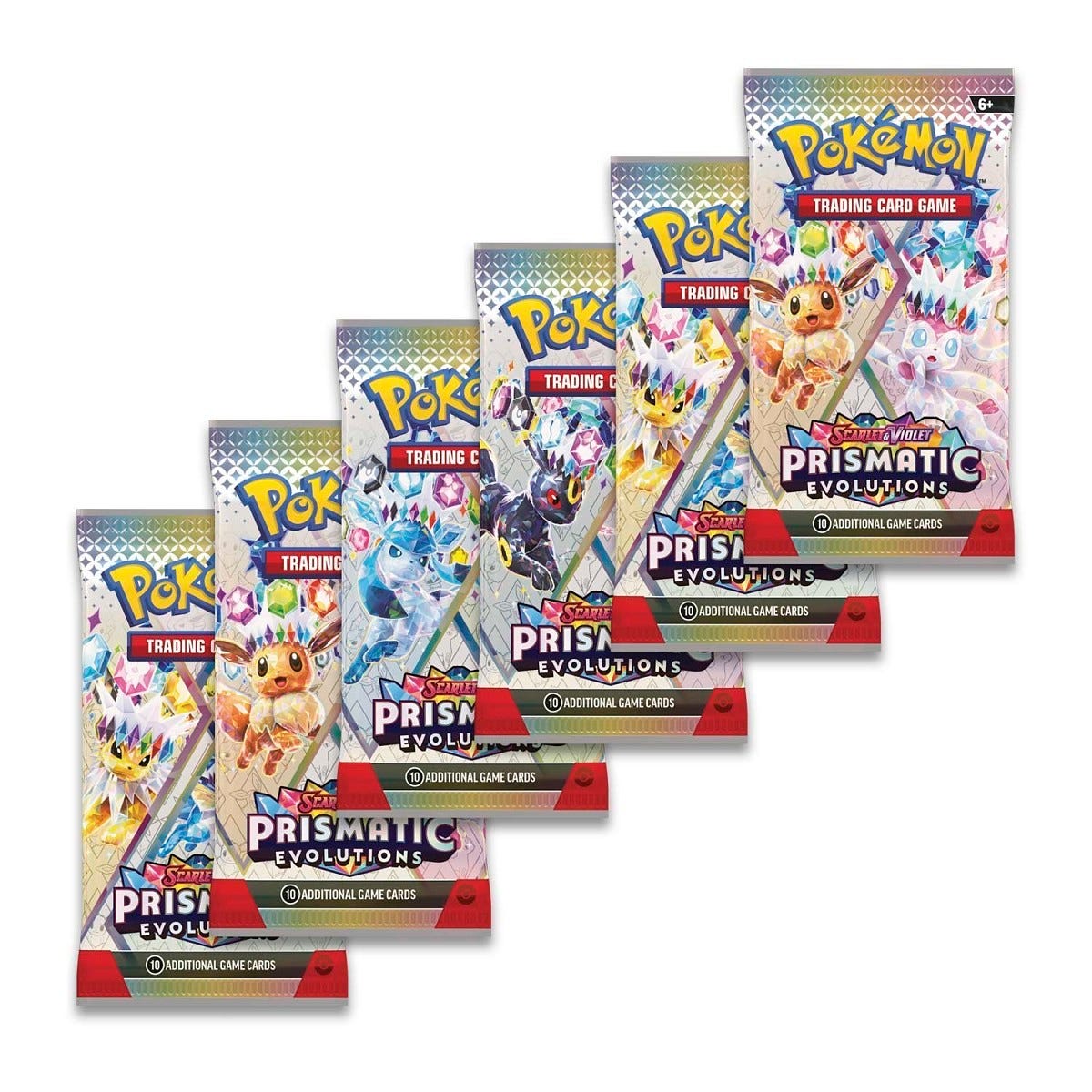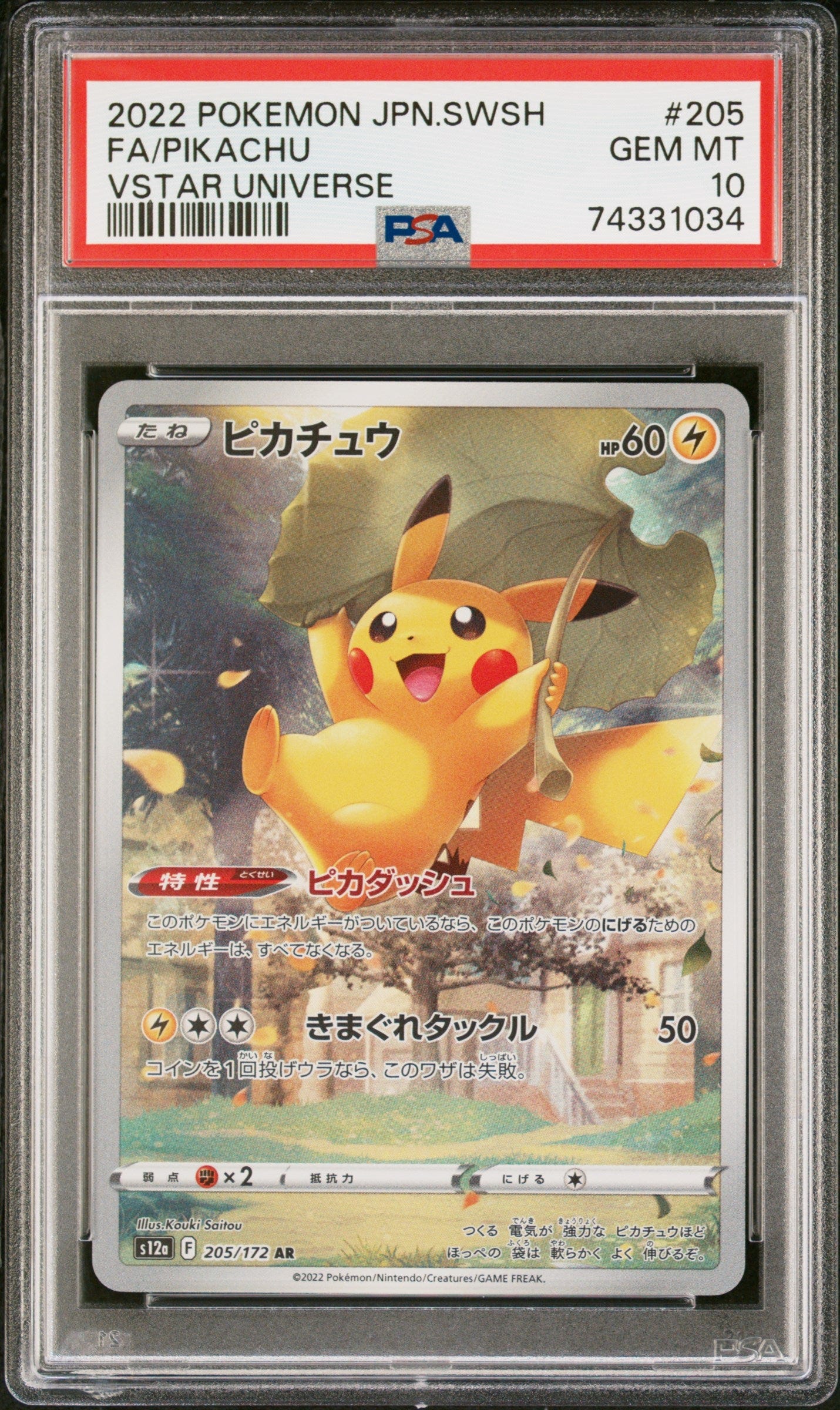- Bedroom Business
- Posts
- Pokémon Cards are Currently Beating the S&P
Pokémon Cards are Currently Beating the S&P
It’s as crazy as it sounds.
Lately I stumbled across a concept called “PokeInvesting” from r/PokeInvesting.
Here’s the concept: People can buy Pokémon Card products, including Single Cards (Singles), Booster Packs (random 10 cards), Booster Boxes (36 booster packs), and Elite Trainer Boxes (ETBs for short, containing around 8 booster packs and other promotional items).
PS! If you’re interested in this idea and want to hear about other crazy ways people have been starting businesses, subscribe to my newsletter Bedroom Business!

Buyers can choose to hold their sealed product as an “alternative investment” and flip the product a few months/years down the line, or resell immediately depending on the market price of each product sourced from sites like TCGPlayer, a site which provides market value of a product based on previous sales.
Since the release of these cards ~30 years ago, many collectors have been trying to “chase” the most popular, rare cards of these sets. Whether these people are collecting their favorite Pokemon, completing sets, or just looking to hit a jackpot, the supply and demand has created a market around the hobby comparable to the stock market.
Whether it be Logan Paul, Big Justice from the Costco Guys, or fitness influencer JPGCoaching, the hype is now widespread.
History
To quickly summarize the history of these trading cards — Pokémon cards began in 1996, when the Pokémon Trading Card Game (TCG) was first introduced by Media Factory in Japan, alongside the Pokémon video games. Created by Nintendo, Game Freak, and Creatures, the TCG quickly became a global sensation, launching in the United States in 1999 through Wizards of the Coast. The early Base Set cards, featuring iconic characters like Charizard, Pikachu, and Blastoise, fueled a collecting craze that captivated both kids and adults.
Fast forward to today, the game evolved, with several new card sets releasing per year, reworking the trading card game’s mechanics, introducing different card rarities and artworks from popular artists.
PokeInvesting is currently in a boom, but the idea has been around for a while. First Edition Charizard Cards are going for $400 and First Edition Booster Boxes for more than $10,000.

Pokemon Cards had a previous “comeback” year during Covid when Logan Paul (who has a collection of over $5M) and other famous influencers got into the hobby. Today, sets like Surging Sparks and Prismatic Evolutions have pulled old collectors back into the hobby as the demand for certain cards are at an all time high.
Understanding the Market
It’s worth understanding why these cards have certain value. The value ultimately is for collectors who want to complete sets or just have an interest in Pokemon, and also players of the card game. The reason why some cards have a higher value is due to:
Limited prints of certain cards/low quantity of product.
Nostalgia of certain Pokemon, especially older Pokemon/cards from previous generations
Having cards in pristine, mint condition (will talk about card grading below)
Speculation and “Gambling”
It’s worth noting #1 is especially important and gives a lot of value to certain sets, such as Prismatic Evolutions. There are some hot cards in the set, but it is extremely difficult to find products in store. As a result, the second-hard market for these products have extremely high prices.

Surging Sparks Booster Pack Price over time
To elaborate on #4, Pokemon Cards also have an inherent value due to the chance to hit something big. As a result, packs can be compared to lottery tickets, where you can pay about $5 for a chance to hit a $500 card. However, there’s always the more likely chance you’ll walk away with zilch.
Here’s an example of a card growing in value— the most popular card of the Evolving Skies set was an Umbreon card, known as Moonbreon by collectors.

A raw Moonbreon is currently going for $1205 on TCGPlayer (1/26/2025), up 50% in the last three months. For context, this card could have been pulled from a booster pack which MSRPs for about $5-$6. The “pull rate”, AKA the odds of getting this card is about 1/1666 packs.
Note that the MSRP of the Booster Packs you could get this from retail at about $5-$6. Since the set’s initial release date in August 2021, the current price per pack is $15 (1/26/2025), up 15% in the last three months. Think about it like this: there’s a discontinued set (AKA these packs are no longer being printed). Day by day, more “sealed” packs are off the market as more people open these packs. Essentially, these Moonbreons get rarer and rarer as they’re only a finite number of them. Pretty similar to Bitcoin, right?
How high can prices go? A First Edition Base Set Booster Box is currently going for a whopping $16,500. Note that the volume of these is so low, it’s basically up to the seller to decide the price. To compare to a booster box at MSRP today which is around $120, this is an astronomical difference.
So how do people get into this?
Sealed Product
Plenty of people buy products from new sets during release, and just hold. Think about it, if you just held a sealed first edition set, you would have over ten grand. For reference on how modern sets do, here’s a comparison of Booster Boxes in the “Scarlet & Violet” era which started March 2023. Remember, each Booster Box retails at around $120. For sets that don’t have Booster Boxes, Booster Bundles are also available (which include 6 packs), which retail at about $25-$30.
All prices are from 1/26/2025.

At this point, you might think that near every Pokemon product goes up in value. And so far, at least from my research, you might be right (though this is not financial advice). A lot of these cards have big chase cards, such as the 151 set and Prismatic Evolutions set. These packs have inherent value for the chance to pull the chase card. As a result, the products all have value.
2. Reselling
Instead of buying and holding product, a lot of people choose to flip their product immediately. Facebook Marketplace, Tiktok Shop, and even livestreaming services like WhatNot allow you to flip your product near immediately.
Facebook Marketplace & Ebay are the traditional second-hand selling routes. You can list your item here, and wait for it to get sold. TCGPlayer values products based on Ebay’s last sold for certain products.
Tiktok Shop is more interesting — you can be a seller on Tiktok, and create videos to market your product. As a social media platform, visibility is key here but with due time you should also be able to move your product.
My favorite is Whatnot. This is a live shopping app in which you don’t even need to show your face, just show the packs you’re willing to sell. This is all live, so you can interact with buyers in your chat and sell products live. Most buyers usuaully want you, the streamer, to rip packs immediately on live so people can see what they got. After that, you can ship all the cards to the seller after your stream.
Whatnot requires some time and commitment. Speaking to a streamer on Whatnot (@xyzrips), I’ve found that he’s invested $4,000 — $5,000 on product. He streams about two to three times a week for about one to two hours, and over the course of three months he has easily built a 300+ follower community, with 300+ sold products, and about $1000/month in income! My two cents is that there’s a lot of room to grow here if you put in the work — especially if you like Pokemon, this is just a fun kickback activity at the end of the day.
Grading System
The last thing I’d like to highlight is the Grading System used for single cards. Pokémon card grading is the process of evaluating a card’s condition and assigning it a score, typically on a scale of 1 to 10, to determine its value and authenticity. Collectors often grade cards to preserve them and increase their market appeal. Popular grading services like PSA (Professional Sports Authenticator) and CGC (Certified Guaranty Company) inspect factors like centering, edges, corners, and surface quality before sealing the card in a protective slab with its grade displayed. Graded cards are highly sought after, especially rare or vintage ones, as they combine collectibility with investment potential.
Generally, for sellers/buyers who are dealing with single cards, graded is the way to go. There’s also a decent market to buy “raw”, ungraded cards, and submit them for grading. If the card comes back as a 10, you might have made over 20% immediately!
For example, a popular card “Bubble Mew” is currently about $102 ungraded. A PSA 10 version of “Bubble Mew”, essentialy a “perfect” version, is about $974!.

Conclusion
All being said, there are definitely some risks worth understanding if you get into Pokemon Card Collecting. Not every set will grow in crazy value as I mentioned here. For example, the Shrouded Fable set, essentially doesn’t have a “hype” chase card. As a result, there is an abundance in product stock and the prices for these products have not grown since MSRP.
There are also a lot of fake products to watch out for. You’re likely okay buying second hand from a reputed seller, but trust your instinct if something is off about a seller, or product. If a price is too good to be true, it probably is. Always go off TCGPlayer’s market value to appraise products, and ask (and have) references as a seller when needed.
After talking to collectors, streamers, and card shops, I can confidently say there is a huge market in Pokémon Card Collecting, where each card and product feels like a stock you can choose to invest in. Platforms like TCGPlayer make it easy to track how often a product sells and how its price fluctuates over time. Older products almost always beat MSRP due to dwindling supply, and the thrill of chasing rare cards only adds to the excitement. For sellers interested in Pokémon or willing to invest time in learning the culture, this can be a rewarding venture both financially and personally — I certainly had a blast diving into it!
If you enjoyed reading this, feel free to subscribe to my newsletter Bedroom Business to learn about other cool, niche business ideas!